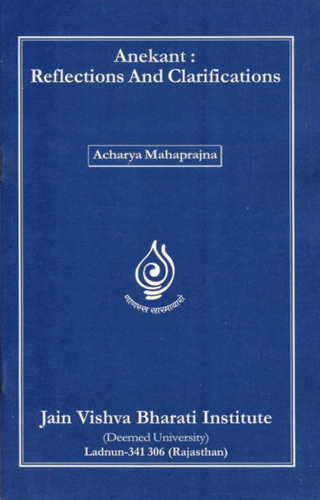The Jain philosophy has explained the phenomenon of speech or speaking very deeply. According to it, during speaking, first of all the speaker appropriates the clusters of speech-particles and transforms them into speech and then release them. In this process, in the first instant of time (t1), the speech-particles are appropriated and in the second instant of time (t2), they are released after conversion into speech. But at the same time-instant (i.e. t2), new clusters of speech-particles are also appropriated, which are then released in the third time-instant (t3), and so on. In this way, continuously there is simultaneous release of the formerly appropriated speech-particles and appropriation of the new speech-particles, every moment. This shows that during the same (single) instant of time there are two actions - release as well as appropriation. It is to be noted that here the release is that of the particles, appropriated in the preceding instant and the appropriation is that of new particles. It means that when set 'A' is released, set 'B' is appropriated; but one does not release and appropriate set 'A' at the same instant of time.[10]
Prajñapana Vṛtti, patra 264: Kaścidekasmin samaye bhāṣāpudgalān gṛhṛtvā tadanantaraṃ mokṣasamaye anupādānaṃ kṛtvā punastṛtīye samaye grhnātyeva na muṅcati, dvitṅye samaye prathamasamayagṛhṛtān pudgalān muṅcati anyānādatte, athānyena prayatnaviśeṣeṇa grahaṇamanyena ca prayatnaviśeṣeṇa (ca) nisargaḥ tau ca parasparamṃ virudhau parasparaviruddhakaryakaraṇāttataḥ kathamekasmin samaye tau syātāṃ, tadayuktaṃ jīvasya hi tathāsvābhāvyāt dvāvupayogāvekasmin samaye na syātāṃ, ye tu kriyāviśāṣte bahavo' pyekasmin samaye ghaṭanta eva, tathādarśanāt, tathāhi-ekāpi nartakī bhramaṇādinṛttaṃ vidadhānā ekasminnapi samaye hastapādādigatā vicitrāḥ kruyāḥ kurvatī dṛśyate, sarvasyapi vastutaḥ pratyekamekasmin samaye utapādavayāvupajāyete, ekasminneva ca samaye, saṅghātapariśāṭāvapi, tato na kaściddoṣaḥ, āha ca bhāṣyakṛt - gahaṇanisaggapayattā paropparavirohiṇo kahaṃ samaye? samaye do uvaogā no hojja kiriyāṇa ko doso? // 1 // iti, tṛtṛye punḥ samaye tāteṣa dvitīyasamayopātān pudgalān muṇcati na punaranyānādatte, utkarṣeṇa tvasaṇkhyeyaiḥ samayairekaṃ grahaṇaṃ manyeta tata āha—'anusamayaṃ' pratisamayaṃ gṛhṇāti, tadāpi kadācidvirahitamapi vyava-hārato' nusamayamityucyeta tatastadāśaṇkya vyavacchedārthamāhaavirahitaṃ, evaṃ nirantaraṃ gṛhṇāti, tatrādye samaye grahaṇameva na nisargḥ, agṛhṛtasya nisargābhāvāt, paryantasamaye ca mokṣa eva, bhāṣābhiprāyoparamato grahaṇāsam-bhavāt, śeṣeṣu dvitiyādiṣu samayeṣu grahananisargau yugapatkaroti. sthāpanā ceyam-
Ap=Appropriation R=Release X=Nil| t1 | t2 | t3 | t4 | t5 | tn |
| Ap | Ap | Ap | Ap | Ap | X |
| X | R | R | R | R | R |
 Acharya Mahaprajna
Acharya Mahaprajna
 Publisher:
Publisher: 